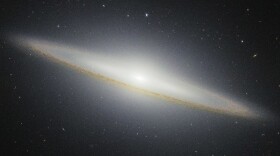Set your alarm early this week and look east between 5:00 and 5:30 a.m. to catch a stunning celestial display. Brilliant Venus, the Morning Star, shines high with the bright orange star Aldebaran glowing below. Aldebaran, part of the V-shaped Hyades cluster in Taurus, has a rich astronomical legacy—its position once helped confirm Einstein’s theory of General Relativity. Nearby, you’ll also spot the shimmering Pleiades cluster. Together, these stars create a breathtaking, layered view of the cosmos worth waking up for.

Play Live Radio
Next Up:
0:00
0:00
Available On Air Stations






